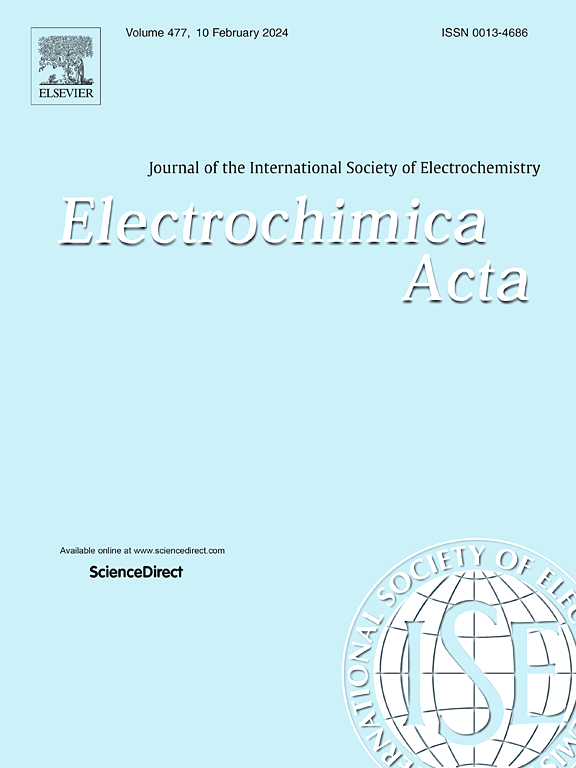通过非活性元素取代解锁钠离子电池长寿命o3型氧化物阴极
IF 5.5
3区 材料科学
Q1 ELECTROCHEMISTRY
引用次数: 0
摘要
o3型NaNi1/3Fe1/3Mn1/3O2因其高比密度和低成本而被认为是最有前途的钠离子电池阴极候选材料之一。然而,由于结构扭曲和不可逆相变导致的快速容量退化和缓慢的扩散动力学,给其商业应用带来了重大挑战。在本研究中,我们设计了一系列不同Al3+掺杂浓度的o3 - nani1 - 3- xfe1 / 3mn1 / 3alxo2阴极,采用液相修饰前驱体法一步合成后煅烧。值得注意的是,过渡金属位点上Al3+取代的最佳水平显著提高了长周期循环过程中的结构稳定性。然而,过量的Al掺杂在na位点阻碍了钠离子的扩散,从而限制了速率性能。o3 - nani1 /3-0.005 fe1 / 3mn1 / 3al0.0050 o2阴极的性能达到了最佳,其整体电化学性能显著,包括在1℃下具有151 mAh g-1的高比容量,在半电池中循环150次后具有85%的优异循环稳定性,以及提高的倍率性能(在10℃下为74 mAh g-1)。为开发长循环寿命的o3型氧化物阴极提供了一条途径,并有助于新材料的设计策略。本文章由计算机程序翻译,如有差异,请以英文原文为准。
Unlocking long-lifespan O3-Type Oxide Cathode for Sodium-ion batteries via inactive element substitution
O3-type NaNi1/3Fe1/3Mn1/3O2 is considered as one of the most promising cathode candidates for sodium-ion batteries due to its high specific density and low cost. However, rapid capacity degradation and sluggish diffusion kinetics, caused by structural distortions and irreversible phase transitions, present significant challenges to its commercial application. In this study, we design a series of O3-NaNi1/3-xFe1/3Mn1/3AlxO2 cathodes with varying Al3+ doping concentrations, synthesized through a one-step liquid-phase modified precursor method followed by post-calcination. Notably, an optimal level of Al3+ substitution at the transition metal sites significantly enhances the structural stability during long cycling. However, excessive Al doping at the Na-site hampers sodium-ions diffusion, thereby limiting the rate performance. The optimal performance is achieved with the O3-NaNi1/3-0.005Fe1/3Mn1/3Al0.005O2 cathode, which exhibits remarkable overall electrochemical performance including a high specific capacity of 151 mAh g-1 at 1 C, superior cycle stability with 85% capacity retention after 150 cycles in a half cell, and improved rate performance (74 mAh g-1 at 10 C). This work provides valuable insights into the behavior of inactive element substitution, offering a pathway for the development of long-cycle life O3-type oxide cathodes and contributing to novel materials design strategies.
求助全文
通过发布文献求助,成功后即可免费获取论文全文。
去求助
来源期刊

Electrochimica Acta
工程技术-电化学
CiteScore
11.30
自引率
6.10%
发文量
1634
审稿时长
41 days
期刊介绍:
Electrochimica Acta is an international journal. It is intended for the publication of both original work and reviews in the field of electrochemistry. Electrochemistry should be interpreted to mean any of the research fields covered by the Divisions of the International Society of Electrochemistry listed below, as well as emerging scientific domains covered by ISE New Topics Committee.
 求助内容:
求助内容: 应助结果提醒方式:
应助结果提醒方式:


